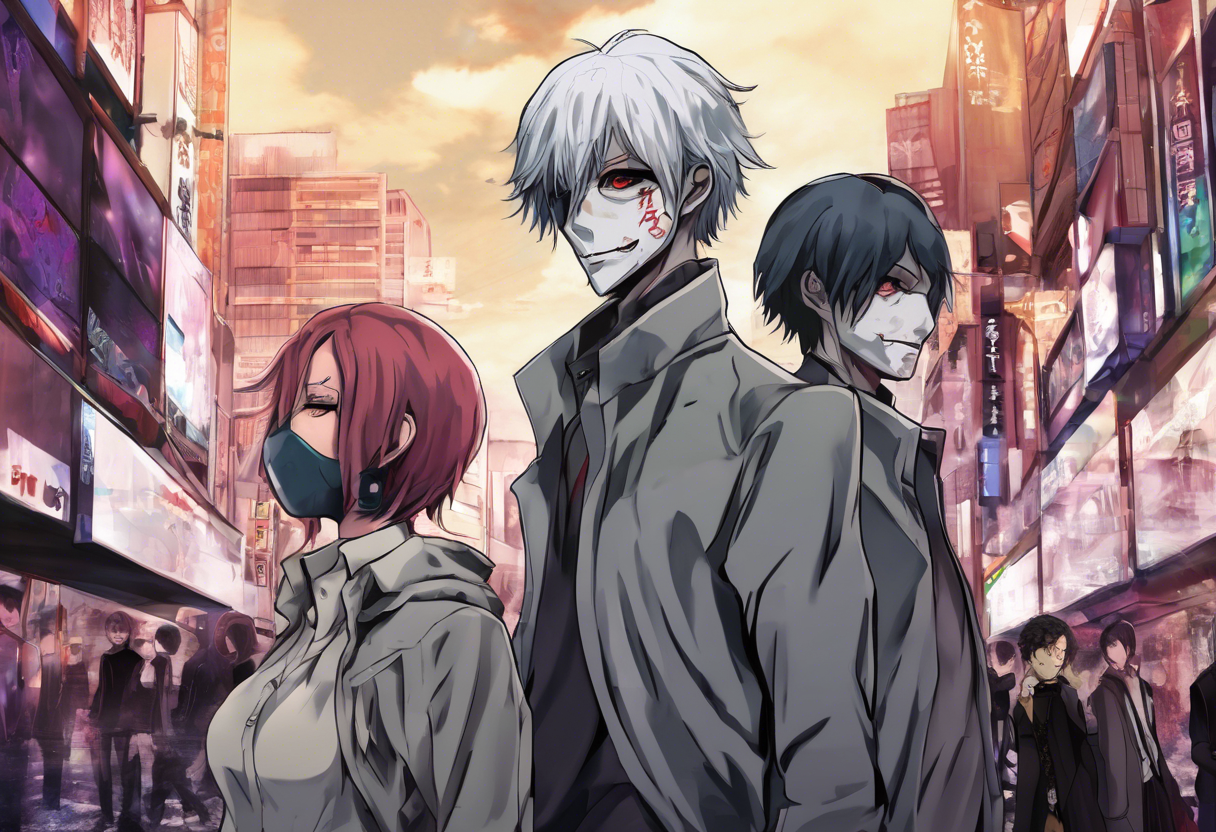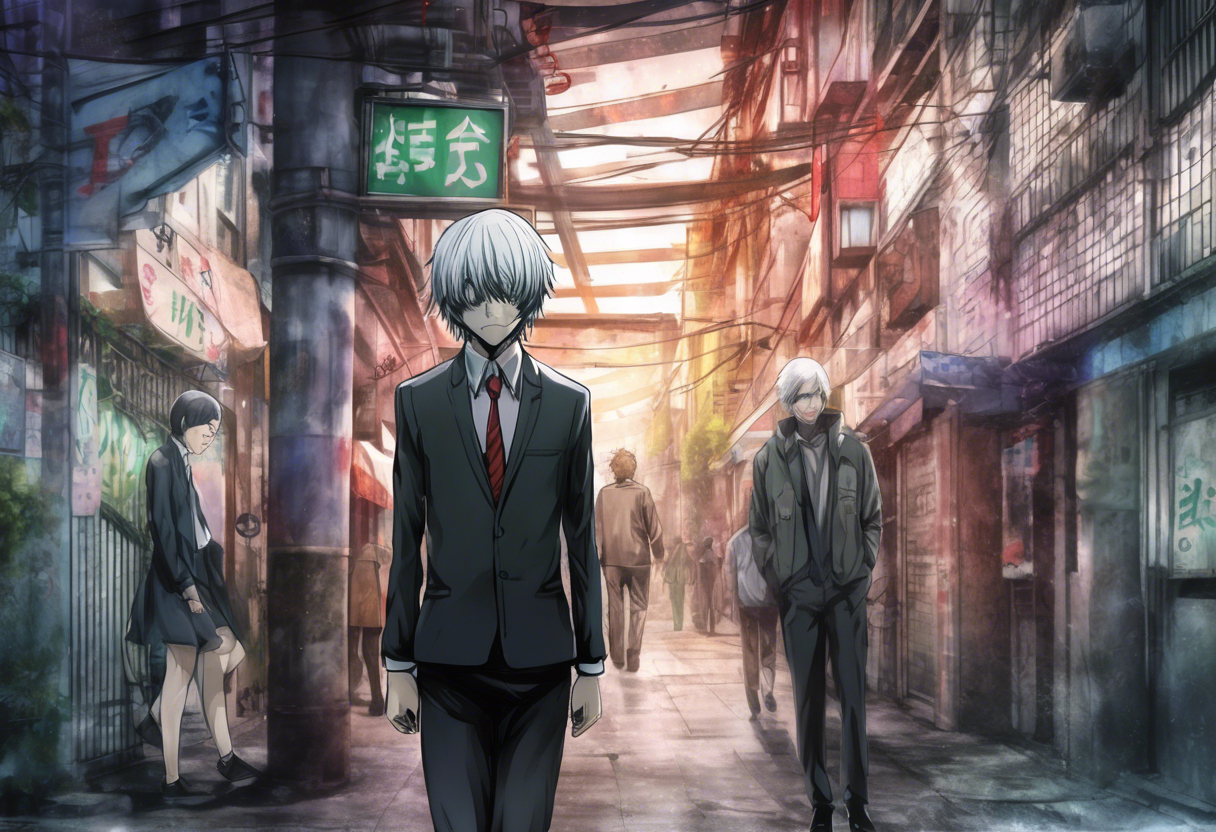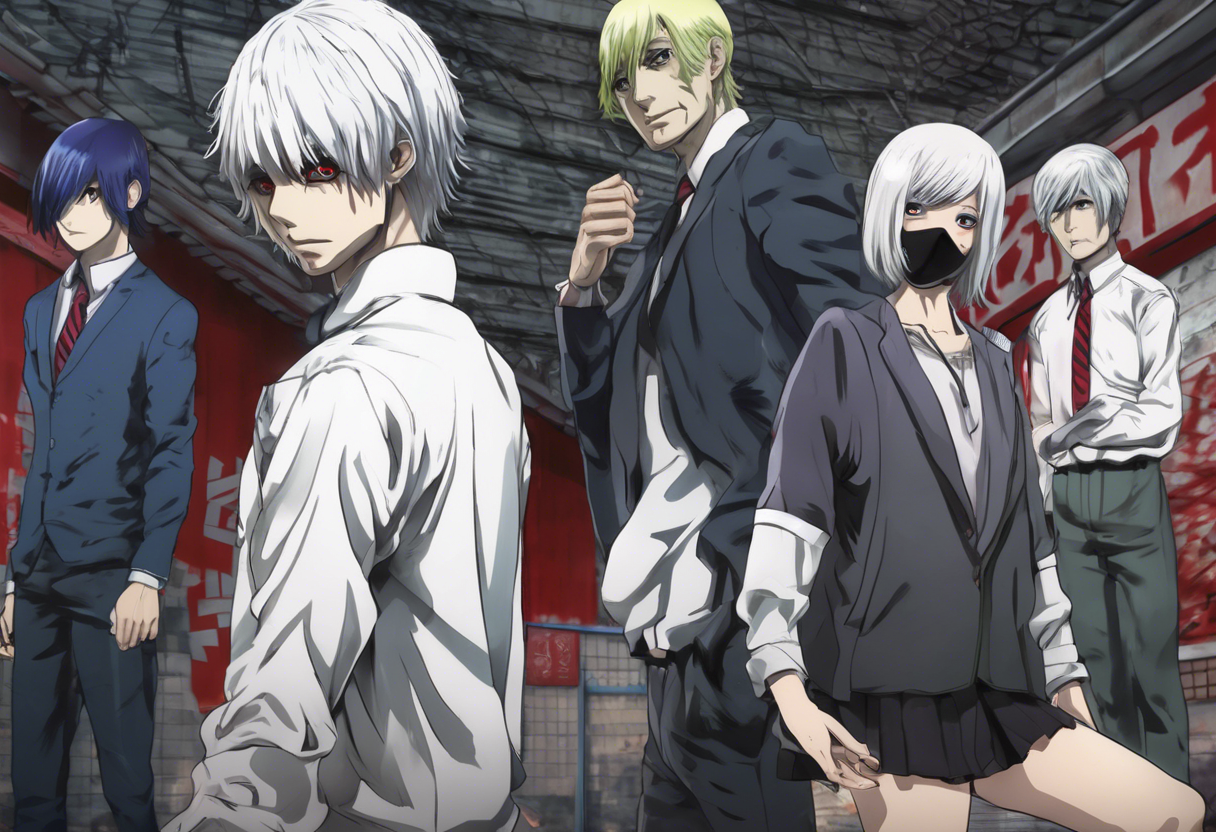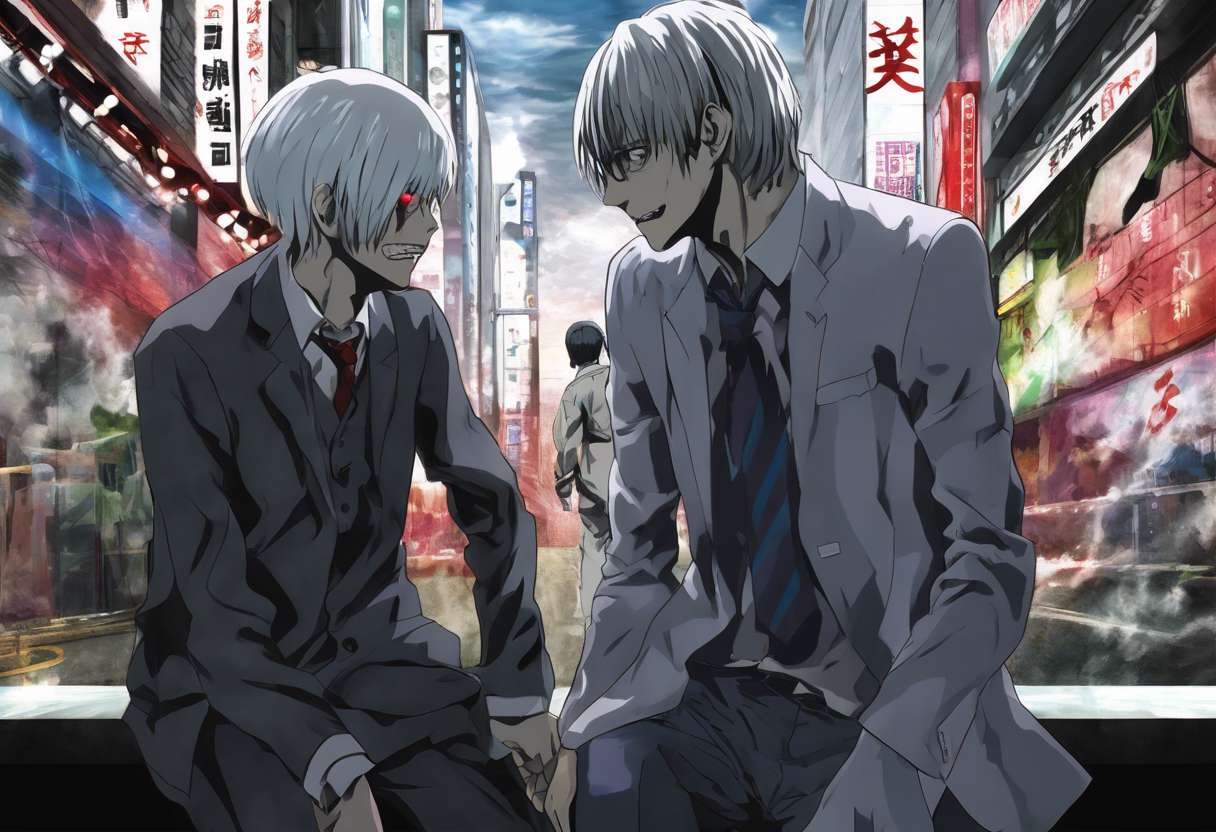Contents
Tokyo Ghoul – Episode 10: Aogiri
Introduction
Tokyo Ghoul – Episode 10: Aogiri, is a pivotal episode in the anime series "Tokyo Ghoul," which is based on the manga of the same name by Sui Ishida. The episode was directed by Shuhei Morita, with the screenplay written by Chūji Mikasano, and produced by Pierrot. It was initially released on September 4, 2014. This episode stands out within its genre for its intense action sequences, complex character dynamics, and the introduction of a powerful and mysterious ghoul organization known as Aogiri Tree.
The production of this episode involved a team of experienced creatives, including director Shuhei Morita, who is known for his work on other anime series, and producer Ken Hagino, who oversaw the entire production process. The episode’s release marked a significant turning point in the series, as it escalated the conflict between humans and ghouls and introduced several key characters that would shape the narrative going forward.
Plot Summary
Episode 10 of Tokyo Ghoul, titled "Aogiri," plunges viewers into a world of heightened tension and violence as the Aogiri Tree, a hyper-violent ghoul organization, launches a surprise siege on the 11th Ward. This assault is led by two mysterious and formidable ghouls, Eto and Tatara, who are part of Aogiri Tree’s leadership. The sudden and brutal attack results in the complete destruction of the CCG (Commission of Counter Ghoul) precinct in the 11th Ward, killing all the Doves stationed there [5].
The aftermath of this attack sends shockwaves throughout the city, particularly in the 20th Ward, where the CCG is headquartered. The new commander of the 20th Ward, driven by paranoia and a desire for vengeance, declares an all-out war against ghouls, starting with the 11th Ward. This declaration sets the stage for a full-scale CCG raid on Aogiri Tree, which is scheduled to take place within a week. The team assigned to this mission includes Commander Marude, Special Investigator Kuroiwa, and other notable characters such as Mado, Shinohara, and the enigmatic Suzuya Juzo, a 19-year-old androgynous ghoul investigator [5].
Meanwhile, Ken Kaneki, the protagonist, finds himself at the center of Aogiri Tree’s attention. Aogiri Tree had been seeking to recruit Rize Kamishiro, a powerful ghoul whose remains are now integrated into Kaneki’s body. Upon discovering Rize’s death and her connection to Kaneki, Aogiri Tree targets him. Kaneki is kidnapped, tortured, and eventually taken away by the members of Aogiri Tree, leaving his friends at Anteiku in a desperate situation.
Touka Kirishima, a key character and Kaneki’s friend, is particularly affected by these events. She is forced to confront her own brother, Ayato, who is aligned with Aogiri Tree, in order to save Kaneki. This internal conflict highlights the complex relationships and moral dilemmas that many characters face in the series. The episode also delves into the investigations conducted by Yomo and Yoshimura, who trace the victims of Ayato’s previous attacks back to Aogiri Tree, further entangling the narrative threads between the different factions [3].
As the episode progresses, the tension between the CCG and Aogiri Tree escalates, with both sides preparing for a massive confrontation. The CCG’s preparations involve mobilizing their most skilled investigators, while Aogiri Tree solidifies its position by recruiting more ghouls and spreading fear throughout the city. This setup creates a sense of impending doom, as the characters and the audience are left anticipating the catastrophic clash that is to come.
The character development in this episode is significant, particularly for Kaneki, who is forced to endure immense physical and emotional pain. His connection to Rize and his newfound status as a target for Aogiri Tree deepen the audience’s understanding of his character and the world he inhabits. Similarly, the introduction of Eto, who is revealed to be the One-Eyed Owl and Yoshimura’s daughter, adds layers to the story, highlighting the complex web of relationships and motivations within the ghoul community [3].
The setting of the episode shifts between the devastated 11th Ward, the CCG headquarters, and the hidden ghoul cafe, Anteiku. Each location serves to underscore the different worlds that coexist in Tokyo Ghoul’s universe: the brutal and violent world of the ghouls, the organized but often corrupt world of the CCG, and the fragile sanctuary of Anteiku, where ghouls and humans can coexist in secret.
The central conflict of the episode revolves around the escalating war between humans and ghouls, with Aogiri Tree’s actions serving as a catalyst for this conflict. The episode also explores the personal struggles of the characters, particularly Kaneki and Touka, as they navigate their loyalties, friendships, and identities in a world where the lines between good and evil are increasingly blurred.
Themes and Symbolism
Episode 10 of Tokyo Ghoul delves into several central themes that are pivotal to the series. One of the most prominent themes is the nature of violence and its consequences. The Aogiri Tree’s brutal attack on the 11th Ward and the subsequent declaration of war by the CCG highlight the cyclical nature of violence and how it can escalate into chaos. This theme is symbolized through the character of Eto, who embodies both the destructive power and the tragic backstory that often drive such violence [5].
Another significant theme is the struggle for identity and belonging. Kaneki’s ordeal at the hands of Aogiri Tree and his subsequent kidnapping underscore his precarious position between the human and ghoul worlds. This internal conflict is mirrored in Touka’s struggle to protect Kaneki while facing her own brother, illustrating the difficult choices characters must make in a world where their identities are constantly challenged.
The episode also explores the theme of power and control, particularly through the characters of Eto and Tatara. These characters represent the leadership of Aogiri Tree and embody the organization’s ideology of eliminating all Doves. Their actions symbolize the quest for power and the willingness to use violence to achieve it, contrasting with the more nuanced approaches of characters like Yoshimura and Yomo, who seek to maintain peace and order within the ghoul community [3].
Cultural Impact
The release of "Tokyo Ghoul – Episode 10: Aogiri" had a significant cultural impact, particularly among anime fans. The episode’s intense action sequences, coupled with its deep character development and complex plot twists, resonated strongly with audiences. It contributed to the series’ growing popularity and solidified its place as one of the most compelling anime series of 2014.
The episode’s influence can also be seen in its impact on popular culture. The character designs, especially those of Eto and Tatara, have been widely praised and have inspired various fan art and cosplay. The episode’s themes of identity, violence, and the struggle for power have also been discussed in various forums and reviews, reflecting its broader cultural relevance.
Critical Reception
"Tokyo Ghoul – Episode 10: Aogiri" received mixed but generally positive reviews from critics and audiences. Many praised the episode’s fast-paced action, the introduction of new and intriguing characters, and the escalation of the conflict between humans and ghouls. However, some critics noted that the episode’s pacing was somewhat uneven, with rapid shifts between different plot threads that could be confusing for some viewers [2].
Despite these criticisms, the episode was widely anticipated and discussed, with many fans expressing excitement and apprehension about the show’s fast-approaching finale. The introduction of Aogiri Tree and its leaders added a new layer of complexity to the series, which was generally well-received by both critics and fans.
Legacy
"Tokyo Ghoul – Episode 10: Aogiri" continues to be a significant episode in the Tokyo Ghoul series, influencing both the anime and manga communities. The episode’s portrayal of intense conflict, complex characters, and deep themes has inspired other creators in the anime and manga genres.
The character of Eto, in particular, has become an iconic figure, symbolizing both the power and the tragedy of the ghoul world. Her introduction in this episode set a new standard for character design and development in anime, making her one of the most memorable characters in recent anime history.
In conclusion, "Tokyo Ghoul – Episode 10: Aogiri" is a landmark episode that has left a lasting impact on the series and the broader anime community. Its complex narrative, deep character development, and thematic richness continue to inspire audiences and creators alike.
References
- https://tokyoghoul.fandom.com/wiki/Episode_10
- https://www.animenewsnetwork.com/review/tokyo-ghoul/episode-10/.78408
- https://viscountxela.wordpress.com/2015/04/04/review-tokyo-ghoul-episode-10/
- https://www.imdb.com/title/tt4019358/
- https://triptychalessandro.wordpress.com/2014/09/08/tokyo-ghoul-episode-10-review-aogiri/







